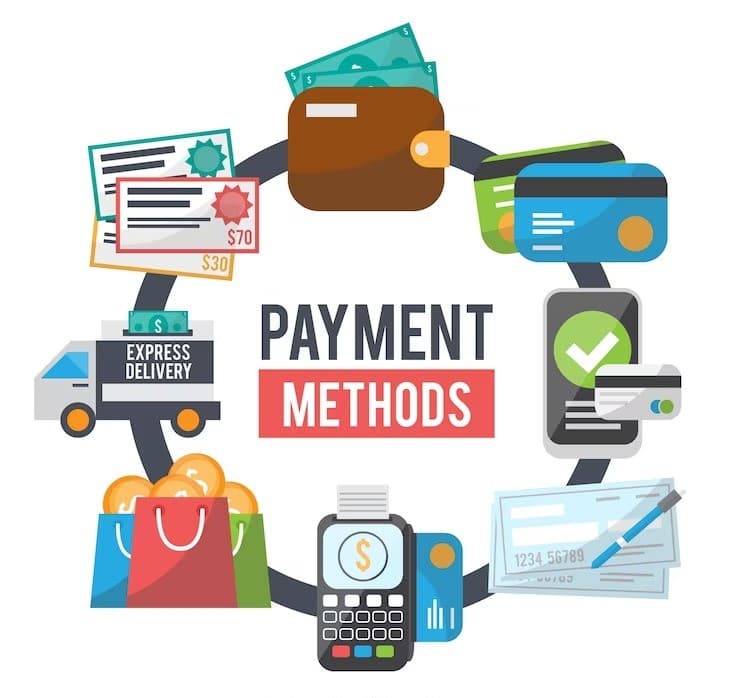The Hidden Costs of Digital Payment Transactions in the World
In an era marked by the pervasive adoption of digital payment methods, the convenience offered by MasterCard and Visa cards is undeniably significant. However, beneath this convenience lies a nuanced landscape of hidden costs that users frequently grapple with. This article delves into the intricacies of digital payment fees and the challenges faced by users in specific countries, shedding light on the often-overlooked aspects that accompany the ease of electronic transactions. As we navigate the intricate world of digital payments, understanding the nuances of fees becomes paramount. From Vietnam to Singapore, Japan to Thailand, users encounter unique challenges associated with transaction costs that extend beyond the straightforward convenience of these widely used cards.


E-Payment and Secure Payment Solutions in the Digital Payment in Japan
In the dynamic realm of digital transactions, the rise of e payment and secure payment mechanisms is reshaping how users interact with financial technology. As countries worldwide embrace the convenience of electronic transactions, Japan stands at the forefront of adopting innovative solutions. Understanding the digital payments trends becomes crucial in navigating the intricate world of global digital payments, ensuring users make informed decisions that align with the security and convenience they seek.
- Digital Payment Fees: For transactions in Japan using Visa or Mastercard, digital payment fees typically range from 2% to 3% of the transaction amount.
- Foreign Transaction Fee: In Japan, for transactions abroad using a Visa or Mastercard, users will incur a foreign currency conversion fee, typically ranging from 1% to 4% of the transaction amount.
Digital Payment Fees and Challenges in Vietnam
Although MasterCard and Visa cards are widely appreciated for their convenience, users frequently face challenges, notably in the form of elevated fees.
- Fees: When using a Visa or Mastercard for transactions, users are subject to fees from 2% to 3% of the transaction amount.
- Foreign Transaction Fee: When using a Visa or Mastercard for transactions abroad, users will incur an additional foreign currency conversion fee from 1% to 4% of the transaction amount.
Consider a specific example of a shopping and payment scenario using a Visa card. Suppose an individual holds a debit Visa card with a credit limit of 10 million VND. This person purchases a mobile phone priced at 10 million VND using their Visa card at an electronics store in Vietnam.
In this case, the user would need to pay an additional 200,000 VND as a digital payment fee, equivalent to 2% of the transaction amount.
If the user were to buy the mobile phone abroad, they would also incur a foreign currency digital transaction fee, let’s assume it’s 2%. Thus, the total amount payable for the mobile phone would be 6.9 million VND.
Digital Payment Landscape in Thailand and Singapore
In the dynamic landscape, trends are shaping the future, especially in countries like Thailand and Singapore. The rise of digital payment Thailand and Singapore reflects the growing prominence of e payment solutions and the emphasis on secure payment methods but also encompasses the broader spectrum of digital payments trends. As users embrace the convenience of digital transactions, the evolution of e payment and secure payment becomes crucial in enhancing the overall experience. Whether it’s ensuring the security of transactions or exploring the latest e payment innovations, staying informed about these trends is paramount in navigating the ever-changing landscape of a global digital payment.

Thailand
- Fees: When using a Visa or Mastercard for transactions in Thailand, users may encounter fees ranging from 2% to 3% of the transaction amount.
- Foreign Transaction Fee: For transactions abroad using a Visa or Mastercard in Thailand, users will incur an additional foreign currency conversion fee, typically ranging from 1% to 4% of the transaction amount.
Consider a scenario in Thailand with a user holding a debit Visa card with a credit limit of 10 million THB. In this case, the user would need to pay an additional 200,000 THB as a digital payment fee, equivalent to 2% of the transaction amount. If the user were to buy the mobile phone abroad, they would also incur a foreign currency digital transaction fee, assuming it’s 2%. Thus, the total amount payable for the mobile phone would be 6.9 million THB.
Singapore
- Fees: When using a Visa or Mastercard for transactions in Singapore, users may encounter fees ranging from 2% to 3% of the transaction amount.
- Foreign Transaction Fee: For transactions abroad using a Visa or Mastercard in Singapore, users will incur an additional foreign currency conversion fee, typically ranging from 1% to 4% of the transaction amount.
Consider a specific example of a shopping and payment scenario using a Visa card in Singapore. Suppose an individual holds a debit Visa card with a credit limit of 10 million SGD. This person purchases a mobile phone priced at 10 million SGD using their Visa card at an electronics store in Singapore.
In this case, the user would need to pay an additional 200,000 SGD as a digital payment fee, equivalent to 2% of the transaction amount. If the user were to buy the mobile phone abroad, they would also incur a foreign currency digital transaction fee, assuming it’s 2%. Thus, the total amount payable for the mobile phone would be 6.9 million SGD.
Empowering Users in the Digital Payment Landscape For Tomorrow’s Transactions
In the ever-evolving realm of digital transactions, users must remain vigilant to ensure that the advantages of convenience are not overshadowed by the burden of hidden costs. As we’ve explored the digital payment landscape in Vietnam, Singapore, Japan, and Thailand, it becomes evident that transparency and awareness are key.
Armed with the knowledge of fees and their potential impact, users can make informed decisions that align with their financial preferences and priorities. As financial technology continues to reshape the way we handle transactions, staying informed empowers users to navigate this landscape with confidence.

In conclusion, this exploration into the hidden costs of transactions serves as a reminder that, while the convenience of electronic payments is undeniable, an informed approach is essential to ensure a harmonious relationship between users and the evolving world of financial technology. As users advocate for fair and transparent practices, the future of digital payments promises to be one where convenience is seamlessly intertwined with financial clarity.
Explore more about the future of financial technology in our Fintech!





